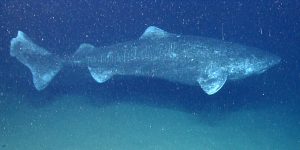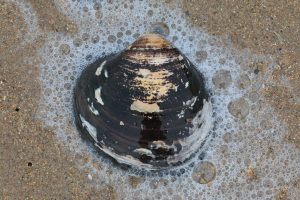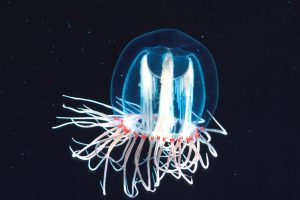- https://earthnworld.com/top-10-longest-living-animals/
- https://onekindplanet.org/top-10/top-10-worlds-longest-living-animals/
- https://ourworldindata.org/life-expectancy
- https://sanctuaries.noaa.gov/pgallery/pgchannel/habitats/habitats_15.html
- http://earth-chronicles.com/science/immortal-beings-on-earth.html
- https://en.wikipedia.org/wiki/Ming_(clam)
- https://blog.nationalgeographic.org/2013/05/03/new-zealand-longfin-eels-freshwater-species-of-the-week/
- http://www.nbcnews.com/id/13115101/ns/world_news-asia_pacific/t/-year-old-darwins-tortoise-dies-zoo/#.W-rKgJNKg-4
- https://www.nature.com/news/2007/070619/full/news070618-6.html
- http://fishlaboratory.com/fish/koi-hanako-longest-living-fish-ever
- https://www.bbc.com/news/science-environment-37047168
Written by Jenifer Chrisman on December 26, 2018.
Millions long for immortality who do not know what to do with themselves on a rainy Sunday afternoon.
–Susan Ertz
Humans have come a long way in terms of longevity. In 1800, the average life expectancy in Europe was 33.3 years. In 2001, Europe’s average life expectancy had climbed to 76.8 years and in the Americas it was 73.2 years. In 2018, here in the USA, male life expectancy has reached 77 years and women’s have reached 81 years.
But what of the greater animal kingdom? Are there animals out there who can expect to live as many, or even more, years that humans?
Out in the wild most animals rarely reach their maximum possible age. Disease, predation, infant mortality, destruction of habitat, weather and competition for shelter and food play a large part in determining how long they may live. But under ideal conditions, some animals can reach some astounding ages:
100+ Years
6: Longfin Eel
Scientific name: Anguilla dieffenbachii

Growing only 0.393701-0.787402 of an inch per year, the freshwater longfin eels of Australia and New Zealand have a distinct sexual dimorphism between the sexes; the males grow up to 29 inches, while the females can reach as much as 61 inches and are generally longer lived. They have an average lifespan of 60 years, but one eel has been recorded as reaching 106. Scientists have discovered that their extremely slow growth rate is the secret to the longfin eel’s longevity.
170+ Years
5: Galapagos Giant Tortoise
Scientific name: Chelonoidis nigra

With an average lifespan of 100 plus years, the Galapagos giant tortoise is endemic to the Galapagos Islands. Harriet (c. 1830-June 2006), reputed to have been one of three tortoises taken by Charles Darwin, during his historic voyage in 1835, from the Galapagos Islands, died at approximately the age of 176 at the Australia Zoo, owned by the "Crocodile Hunter." She missed out on the title of world's oldest tortoise to a Madagascar radiated tortoise who died in 1965 at the age of 188.
200+ Years
4a: Bowhead Whale
Scientific name: Balaena mysticetus

Second only to the blue whale in size, bowhead whales, also known as Arctic whales, have an average lifespan of over 100 years. Backed up by harpoon fragments found in their blubber, whose manufacture gives only a small window, dating whale’s ages is now based on the process of analyzing the amino acids built up on their eye lenses. Using this method, scientists have determined the oldest known bowhead whale to have died at the age of 211.
200+ Years
4b: Koi (fish)
Scientific name: Cyprinus carpio

With an average lifespan of 25-30 years, Koi, or carp, are kept for decorative purposes in water gardens and ponds due to their varied colors and patterns. Despite their low, average lifespan, some can live to astounding ages. Hanaka (c. 1751-July 1977), meaning "flower girl" in Japanese, died at the age of 226. This means she was born before the founding of the United States.
Up to 400 Years
3: Greenland Shark
Scientific name: Somniosus microcephalus

Only reaching maturity at about 100 years of age, Greenland sharks, like longfin eels, are slow growers. Swimming through the cold depths of the North Atlantic, they average 0.393701 of an inch per year and can reach 16 feet in length. Using radiocarbon dating to determine age, researchers have estimated that one of the females, of the 28 sharks they were testing, was around 400 years old.
500+ Years
2: Ocean Quahog
Scientific name: Arctica islandica

Like trees, a clam’s age can be determined by the annual growth rings on their shells. Ocean quahogs have an average lifespan of over 100 years, but specimens have been calculated at over 400 years. One in particular, Hafrún (also known as Ming, c. 1499–2006), roughly translated as “the mystery of the ocean,” died at the age of 507. Dredged off the coast of Iceland, its shell was opened so researchers, “unaware” of its lofty age, could examine it.
Almost Immortal
1: Turritopsis Dohrnii (jellyfish)
Scientific name: Turritopsis dohrnii

The turritopsis dohrnii jellyfish only misses out on true “immortal” designation because, like every other living creature, it is subject to predation. Able to “bypass death,” it can convert itself from its mature form to an immature polyp when injured or stressed. There is no limit to this ability, so aside from predation, this amazing jellyfish has a boundless possible lifespan.
The animal kingdom is filled with a complex diversity that offers up new wonders every day. Animals such as these, with their long life expectancies, are just a fraction of the many amazing things nature has to offer.
Sources:



